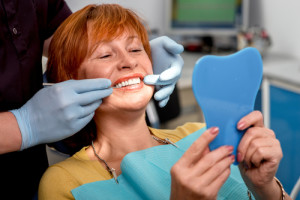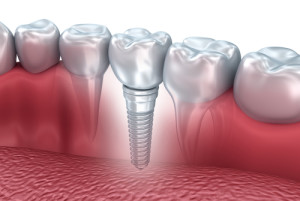Bite guards are a non-surgical, non-invasive device that covers the mouth and lower jaws to minimize and prevent injury to the upper teeth, gums, lips, and jaw. A successful mouthguard is similar to a crash helmet for the jaws and teeth. It is designed to provide a tight, strong barrier between the lower teeth and the biting surfaces of the upper teeth. The jaws are then securely secured with the use of dental cement or adhesives. A dental implant is then used as the anchor for the jaws and the rest of the body’s joints, including those on the hands and feet. Dental implants are generally  recommended for children over the age of three.
recommended for children over the age of three.
The use of dental implants as bite guards can be done as a cosmetic procedure or as a functional treatment that helps improve the overall appearance of a person’s mouth. Cosmetic treatments are often combined with procedures to repair damaged or chipped teeth or even to improve the shape of a smile. Patients who have undergone any of these treatments, however, may find that their bite is off-center or off-center.
As well, the alignment of their lower teeth can sometimes leave them unable to comfortably open their mouths wide enough for healthy chewing. Dental implants, therefore, allow these patients to secure their lower teeth in a proper position, allowing them to easily open their mouths wide enough for normal, healthy chewing. This can help children, teens, and adults maintain healthy chewing habits throughout their lives.
Custom Fit Bites Guards provides high-quality custom-fit bite shields to protect the teeth and jaw to relieve many common dental problems and prevent damage to teeth from over biting. When you suffer from teeth grinding, or bruxism, you might benefit from a custom-fit bite guard. Custom-fit bite guards are usually made with a variety of materials including plastics, metal, and other types of composites.
If your dentist has not yet recommended a guard, he or she may be able to recommend one for you based on your individual needs. If you are concerned about wearing a guard, you should know that most guards are made to last a lifetime and do not require re-fitting, which means they will not need replacement. You can get a bite guard over at https://puresmiles.com/westerville/
There are a variety of bite guards available for you to choose from, including different styles, sizes, and colors. You will find guards that will fit either the top of your mouth or lower jaw. You can even buy bite shields that are custom-made so that your jaw can fit it more tightly.
These guards also come in an array of different colors including black, red, brown, white, and even gray. Some of the best guards are made with different materials for different types of dentistry procedures, such as crowns, caps, bridges, and crowns. The price will also vary depending on the type of guard, materials used, and how many you order.
Bite guards are available for people who have suffered from TMJ pain, as well as braces and dentures. People who have had their teeth knocked out may also benefit from a guard. Your dentist can also advise you of other options that might be suitable for your specific needs. Although they are expensive, you may not need them at all and they can be purchased as a set so that you do not have to buy the same guard over again.
 Smokers should visit their dentist more often as smoking is a risk factor for periodontal disease, an infection of the gums that can cause tooth loss and well as other problems. Periodontal disease can cause swollen, bleeding gums and bone loss. Treatment is expensive and can require prescription mouthwash and a procedure known as scaling and planing that involves the removal of plaque and tartar above and below the gumline. Once removal is completed, the dentist will begin the planing process of smoothing the roots of the teeth to promote tooth reattachment to the gum. Many dentists perform scaling and planing over the course of four visits, doing only one quad at each visit. You can expect to be numbed for the procedure, and you will need to avoid strenuous activity for 24 hours or until the time your
Smokers should visit their dentist more often as smoking is a risk factor for periodontal disease, an infection of the gums that can cause tooth loss and well as other problems. Periodontal disease can cause swollen, bleeding gums and bone loss. Treatment is expensive and can require prescription mouthwash and a procedure known as scaling and planing that involves the removal of plaque and tartar above and below the gumline. Once removal is completed, the dentist will begin the planing process of smoothing the roots of the teeth to promote tooth reattachment to the gum. Many dentists perform scaling and planing over the course of four visits, doing only one quad at each visit. You can expect to be numbed for the procedure, and you will need to avoid strenuous activity for 24 hours or until the time your  Before you are able to comprehend what
Before you are able to comprehend what  ved from being used or inserted to fix a single tooth, via installing on the implant a crown or a replacement tooth, to also serving to fit several missing teeth inserted over a bridge on top of the implant. Therefore, they could help if a person lost one tooth, several or all of their teeth. In the case of half or all of teeth being lost, an alternative of acrylic dentures or false arch of teeth could be fitted, but these do not provide a normal sense of chewing and biting. Which lost teeth can qualify for an implant? The answer is that they are used with pre-molars, canines, front and back teeth whether on the upper or lower jaw
ved from being used or inserted to fix a single tooth, via installing on the implant a crown or a replacement tooth, to also serving to fit several missing teeth inserted over a bridge on top of the implant. Therefore, they could help if a person lost one tooth, several or all of their teeth. In the case of half or all of teeth being lost, an alternative of acrylic dentures or false arch of teeth could be fitted, but these do not provide a normal sense of chewing and biting. Which lost teeth can qualify for an implant? The answer is that they are used with pre-molars, canines, front and back teeth whether on the upper or lower jaw . One is having a denture if it is suitable for your needs. It is important to know that implants have been used widely and successfully, but any patient intending to have them inserted should understand how the process works, know the steps and the aftercare needed as it is a procedure which takes time, and may be carried out over multiple stages. Additionally, taking care of your oral hygiene after fitting implants is very important as this helps keep the implants for long periods of time. Some implants may last up to 20 years. The cost could also be substantial and is dependent on how many teeth you are replacing.
. One is having a denture if it is suitable for your needs. It is important to know that implants have been used widely and successfully, but any patient intending to have them inserted should understand how the process works, know the steps and the aftercare needed as it is a procedure which takes time, and may be carried out over multiple stages. Additionally, taking care of your oral hygiene after fitting implants is very important as this helps keep the implants for long periods of time. Some implants may last up to 20 years. The cost could also be substantial and is dependent on how many teeth you are replacing. States of America, the American Academy of Implant Dentistry provides credentials for patients looking for dental implant specialists. This credential comes after testing, education and training that dentists undertake.
States of America, the American Academy of Implant Dentistry provides credentials for patients looking for dental implant specialists. This credential comes after testing, education and training that dentists undertake. mplants. Dentists will take ‘radiographs’ of the jaws as you need to have healthy bone structure and they need to check for nerves and sinuses and their positions especially in the location of where the implant will go. Either X-rays or Computed Tomography (CT) scans may be used to give a three dimensional image to help dentists plan how to insert the implant.
mplants. Dentists will take ‘radiographs’ of the jaws as you need to have healthy bone structure and they need to check for nerves and sinuses and their positions especially in the location of where the implant will go. Either X-rays or Computed Tomography (CT) scans may be used to give a three dimensional image to help dentists plan how to insert the implant. were used since the 1960s. They were used to replace missing teeth, but nowadays are used to support a crown (which are used for a single tooth), or a bridge which replaces a set of missing teeth or even all as with dentures. People who want to get their normal chewing back benefit from implants because they feel and work like normal teeth. Their material titanium allows the implant to fit with the adjacent teeth and does not require any root work or filling to be done.
were used since the 1960s. They were used to replace missing teeth, but nowadays are used to support a crown (which are used for a single tooth), or a bridge which replaces a set of missing teeth or even all as with dentures. People who want to get their normal chewing back benefit from implants because they feel and work like normal teeth. Their material titanium allows the implant to fit with the adjacent teeth and does not require any root work or filling to be done. rope. You need to find out how much it costs in your country, check how reliable the service is and what is and isn’t covered by insurance. However, to help you understand the cost, the following are what make up a
rope. You need to find out how much it costs in your country, check how reliable the service is and what is and isn’t covered by insurance. However, to help you understand the cost, the following are what make up a 